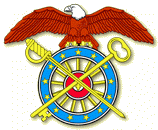
Welcome to the new home of the 228th Supply & Service Company (Direct Support).
The 228th was activated on 20 July 1966, Long Binh, Ben Hoa Province, III Corps, War Zone C the bulk of personnel (110 approximate – 233 Authorized) consisting of former Officers and Enlisted of Company B, 266th Quartermaster Battalion (Direct Support) which had been deployed to Republic of Vietnam 31 May 1966 from Fort Lewis, Washington. Soon after arrival in Long Binh (1 July 1966) B Company was “inactivated” on 20 July 1966 with the 228th concurrently formed and “activated”.

Not a part of the 228th?
Choose the link that corresponds with your respective battalion.
The 228th S&S Co (DS) served in Vietnam 20 July 1966 – mid March 1973 under seven known superior command structures, they being:
- 266th S&S BN (DS) July 66-May 67
- 567th S&S BN (DS) June 67- July 68
- TNLSA (Provisional) – {Tay Ninh Logistical Supply Activity} August 68 – December 68*
- 277th S&S BN (DS) January 69 – August 70 **
- The Tay Ninh LSA was officially closed down 1 October 1971 – Classs One Yard being the last closure.
The previous four all in III Corps, War Zone C were followed by:
- 91st Composite Service BN August 70- January 71***
- 48th Transportation Group (Provisional) February 71- 15 June 72
- 91st Composite Service BN June 72 – March 1973 – aka: “Can Tho Logistical Supply Area (Provisional)
The previous three in IV Corps, Delta Area of Can Tho and Bien Thuy”
* TNLSA established by General Orders in 1968. However, as of 1 November 1968 the 1st Logistical Command and USASUPCOM command structure and flow charting, indicate the 567th S&S BN (DS) still exists as a command entity…See History 1967-1968 regarding the establishment of TNLSA.
** According to 29th General Support Group reporting the 277th S&S BN (DS) arrived in Tay Ninh November 1968. Reporting by 277th indicates they arrived in “early January 1969”.
*** Per NARA/Fold3 records ‘On 20 March 1972 the 91st Composite Service BN was consolidated with the 266th Composite Service BN and redesignated 266th Composite Service BN.’
All the preceding seven superior command entities were subordinate to: 29th General Support Group, USASUPCOM, Saigon, 1st Logistics Command.
We begin our story with the following:
On May 13th, 2004 the 228th Supply & Service Company (DS) received US Army Quartermaster Regimental Honors as a Distinguished Unit of the Regiment.
VIEW ALL AUTHENTICATED KNOWN AWARDS
Extract: Quartermaster Regimental Honors Dinner Program.
“Welcome to the 2004 Quartermaster Regimental Hall of Fame, Distinguished Members, and Distinguished Unit of the Regiment Induction Ceremony”
“Tonight we honor 35 individuals, and 5 organizations whose achievements and contributions to our Army and Nation exemplify the high standards of our Corps. In our presence are true heroes and role models who paved the way to success for those who serve today. Their legacy is the foundation upon which we build the bridge to the future. Sacrifice, dedication to duty, professionalism, selfless service and innovation are all terms which describe how our inductees have supported victory by America’s Army. They represent the very essence of our Corps and are an inspiration to us all.”
Accepting the honor in behalf of the 228th Supply and Service Company (Direct Support) were four original members of the Company when it was first activated in the Republic of Vietnam, who served 1966-1967. Then 1st Lt. William I. Eckhart – Laundry and Bath Officer, then 1st Lt. Tommy D. Bourlier, Graves Registration Officer – Supply Platoon Leader, then SP4 Arthur B. Neighbor Jr, Company Clerk – Personnel Specialist, and then SP4 Ronald L. Fischer, Assistant Company Clerk – Clerk Typist.
Extract: Quartermaster Regimental Honors Dinner Program.
“It is indeed fitting that we pay tribute to these great sustainers – our distinguished Warfighter Logisticians. On behalf of a grateful Corps and Nation, I say thank you for carrying our torch so very, very well.”
Signed:
Scott G. West
Brigadier General, U.S. Army
The Quartermaster General
13 May 2004
We left Vietnam quietly, perhaps unaware that there was a lot to be very proud of. The 228th was a successful high impact unit that performed magnificiently well. Collectively as a unit, we are now a “Distinguished Unit of the Regiment” for all time, a very prestigious honor in the Quartermaster Corps.
Many of the officers and men that served in this company have begun to make contact with each other once again. For many, it has been a long overdue reunion. This site is dedicated to the families of those extrordinary men that performed so magnificiently under adverse conditions, in hostile regions, and in spite of national controversy and criticism. We share the experience as kindred spirits forever.
This site was first posted on the Internet June 2004 (subsequently upgraded in 2005 – 2012 and presently undergoing further upgrade as of 2013 by creating a Home site for our brother companies; the 506th and 624th S&S Companies – Direct Support). With input from former Officers and Enlisted who served in the unit(s), we have been in the ongoing process of rebuilding and updating this web site. If you would like to get in contact with us or furnish information you feel might be appropriate to the site, please register (create an account – free) pending validation as an authorized user to post or reply within ‘Message Board’. And, or use ‘contact’ section for appropriate year to share photographs, writings or other. There are no costs related to this website – it is free.
We are all eager to hear from each of you ~